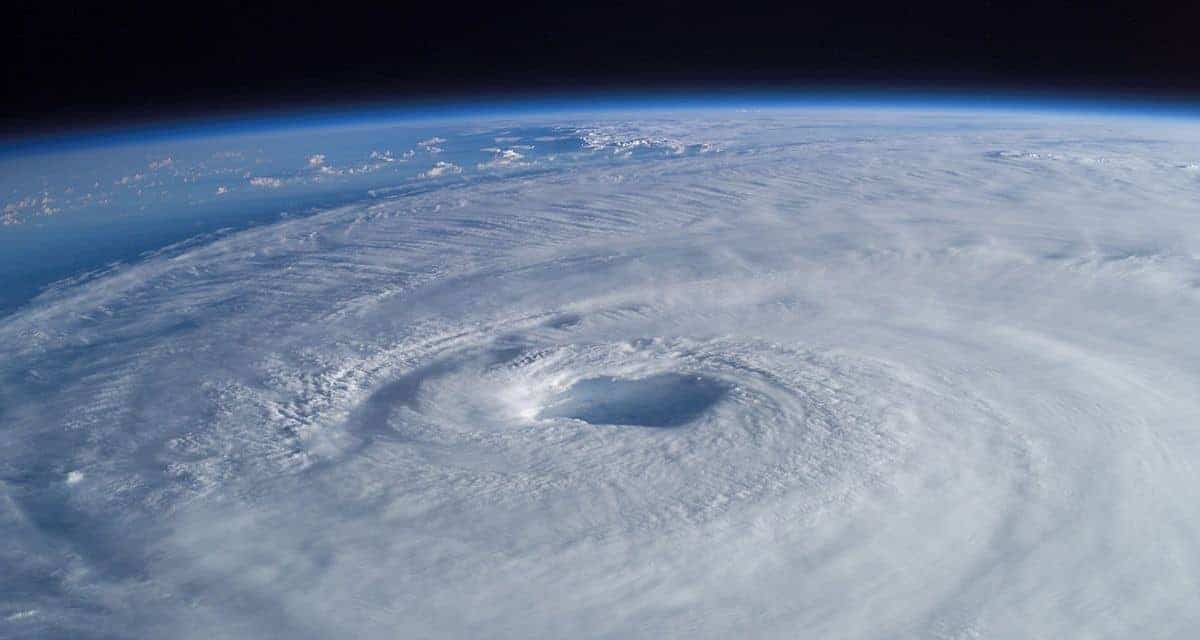Tropical cyclones, AKA hurricanes and typhoons, are the largest and most powerful storm systems on Earth. These massive storms can literally wipe out cities and even entire regions. In modern times efforts to strengthen buildings and to get citizens out of the way of approaching storms has helped reduce casualties. Yet, monetary costs have only increased as property has become more expensive and cities more dense. Even as our ability to protect people is increasing, economic damage can cripple cities and regions.
Tropical cyclones can occur in just about any large, warm ocean. The Pacific produces the most cyclones, but they also frequently form off of the coast of West Africa in the Atlantic and in the Indian Ocean. Only one hurricane is known to have formed in the South Atlantic, Hurricane Catarina. In the Atlantic cyclones are called hurricanes. In the Pacific and Asia they are frequently referred to as typhoons. Weaker cyclones are usually referred to as depressions or simply tropical storms.
No matter the name and birthplace, these storms can be large, deadly, and can cause massive and widespread destruction. That’s why we’re going to take a moment to look over the most destructive hurricanes in history. This can be thought of and measured in both economic terms and losses of life.

1. Katrina- The Costliest
Hurricane Katrina goes down as the costliest hurricane in history, causing over $100 billion dollars worth of damage (in 2005 dollars). 1,836 people were also killed by the storm, making it one of the deadliest storms in the United States’ history, and the deadliest hurricane in America since the early 20th century.
Hurricane Katrina struck Louisiana, where much of the geography consists of low-lying marshes and bogs. In fact, parts of New Orleans, the biggest city in the region, are actually below sea level and protected by levees. When Hurricane Katrina struck, these levees were overpowered and as a result much of New Orleans was flooded.
Hurricane Katrina first struck South Florida as a rather weak category 1 hurricane. Then, in the Gulf of Mexico, the storm picked up strength and headed north. For a short time the hurricane strengthened to a Category 5 and the government in Louisiana urged citizens to flee or else take shelter. The storm weakened to a category 3 by the time in made impact in Louisiana, but its heavy rains caused widespread destruction none-the-less.
Hurricane Katrina’s awkward and hard to predict path was perhaps its deadliest attribute. By the time it became clear that the storm could hit New Orleans, it was too late for many to evacuate. Much of Louisiana sits below, at, or near sea level, so flooding was a huge risk.
When Hurricane Katrina did strike, some levees failed and were overwhelmed in and outside of New Orleans. As a result, flooding was widespread. Many homes were destroyed and lives were lost. Meanwhile, the state and federal government were slow to respond to the damage, and FEMA (Federal Emergency Management Agency) was caught flat-footed.
Much of New Orleans and the surrounding bayous were flooded. While most of the casualties occurred in Louisiana, over 200 people died in Mississippi. Further, casualties were recorded in Kentucky, Alabama, Florida, and even as far north as Ohio. Ultimately, the Federal government issued disaster declarations covering 230,000 kilometers, an area bigger than the entire country of Romania.

